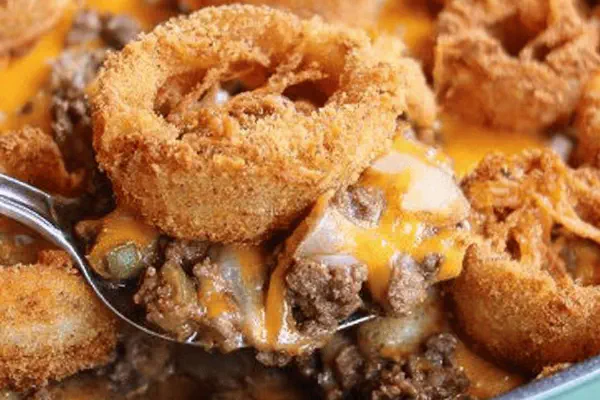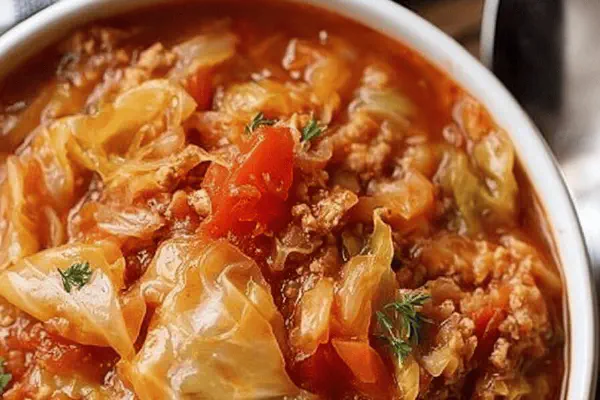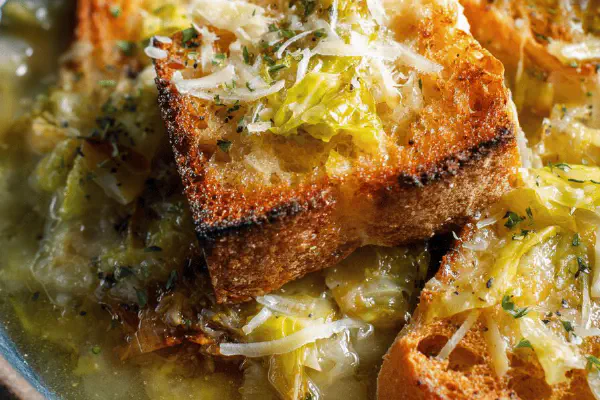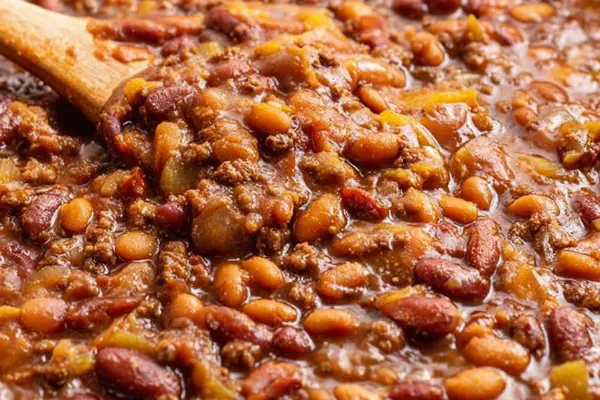Twisted Cabbage Roll Soup
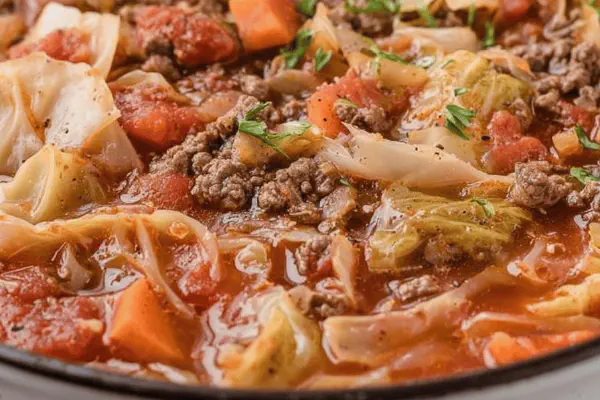
By Emma
Certified Culinary Professional
Ingredients
- 1.5 pounds ground beef
- 1 large onion diced
- 2 medium carrots diced
- 2 teaspoons minced fresh garlic
- 2 tablespoons Worcestershire sauce
- 1 teaspoon salt
- ½ teaspoon black pepper ground
- 1 teaspoon garlic powder
- 1 teaspoon onion powder
- 1 teaspoon smoked paprika
- 1 teaspoon Italian seasoning blend
- 1 medium head cabbage chopped
- 6 cups beef broth low sodium
- 1 can petite diced tomatoes 14.5 oz
- 1 can tomato sauce 8 oz
- 3 tablespoons ketchup
- 2 bay leaves
- ½ cup long grain white rice rinsed
About the ingredients
Method
- Heat Dutch oven medium-high; crumble beef breaking apart. Cook till no pink visible, meat browned but not overcooked. Drain fat well—too greasy flavors soup funny. Return beef to pot. Toss in onions, carrots, and fresh minced garlic; stir, hear onions soften and smell that sweet onion-garlic combo? Roughly 6 minutes—onions should translucently glisten, carrots just starting to give.
- Spice time: splash Worcestershire, season with salt, pepper, garlic and onion powders, smoked paprika, Italian herbs. Stir to evenly coat meat and veg. Paprika adds smoky depth not found with plain paprika; I learned this swap mid-pantry raid. Always taste at this stage; spices concentrate here.
- Add chopped cabbage straight in. Stir cabbage for 2-4 minutes until it wilts but retains bite—should shrivel visibly, greener parts soften slightly. Important: cabbage volume shrinks; don’t rush or you’ll get soggy mush.
- Pour in beef broth, diced tomatoes with juices, tomato sauce, and ketchup—ketchup works here like a subtle sweet punch to tomato acidity. Toss bay leaves in. Stir in the rinsed rice thoroughly.
- Bring everything to high boil—bubble-heavy, steaming thick steam smacking the lid—then immediately reduce to low heat. Cover tightly. Don’t peek too early, lid traps steam for rice to absorb all liquid and soften slowly. Peek at 28 minutes; if rice still firm, return lid and cook 5 more minutes. Visual cue: rice grains swell but not broken down to mush.
- Final step: fish out bay leaves—they’ll have imparted earthy background but no one wants to eat those leathery leaves. Sprinkle with fresh chopped parsley for freshness and color. Serve hot; soup clings to the back of spoon like cabbage roll filling but broth-light enough to sip.
- Pro tip: If you don’t have garlic paste, mince fresh garlic finely. If rice is stubborn, add splash broth and stir carefully without breaking rice. Cabbage choice matters—Green or Savoy are best, Napa gets slimy.
- Leftover tip: This soup thickens as it sits; add broth when reheating to loosen. Flavor intensifies overnight, which I find worth the wait.
Cooking tips
Chef's notes
- 💡 Brown beef thoroughly but avoid drying it out. Fat renders and binds flavors with vegetables. Drain excess carefully if meat too lean. Fat slickness changes final broth feel - balance is key.
- 💡 Add minced garlic last in the initial sauté to keep pungency without burning. Garlic paste can scorch easily, fresh minced garlic holds aroma better under medium heat. Onions translucent signals readiness for spices.
- 💡 Watch cabbage volume shrink as it wilts; stir gently two to four minutes. Don’t rush or cabbage turns mushy. Texture matters. Visual clues: greener parts soften first, edges shrivel before that soft bite hits.
- 💡 Slow simmer with lid on traps steam for rice absorption. Resist temptation to peek early; peek around 28 minutes when steam thickens, rice grains swell but remain intact. Add broth if rice’s firm, no broken grains allowed.
- 💡 Bay leaves add depth but pull them before serving. Leathery leaves ruin eating. Sprinkle fresh parsley last for brightness; dried herbs lose punch here. Use green or Savoy cabbage; Napa wilts into slimy mess. Small adjustments preserve texture.
Common questions
Can I use garlic paste instead of fresh minced?
Paste burns easily; flavor flattens if cooked too long. Fresh garlic holds sharpness better. If paste only, add late and reduce heat. Minced is more forgiving mid-sauté.
What about rice substitutions?
Long grain works for firm texture. Short grain gives mush; not recommended. Rinsing rice helps stop excess starch that thickens broth too much. Trying quinoa or barley? Adjust cook time, liquid amounts shift.
How do I fix dry or tough rice?
Add broth slowly near end of cooking. Rice texture needs attention, not just time. Cover tightly to trap steam. If broth starts low, supplement in small sips. Patience over heat spike.
How to store leftovers?
Refrigerate in airtight container. Soup thickens overnight because rice swells. Add broth or water when reheating. Can freeze but rice texture softens; reheat gently, avoid boiling after thaw.
